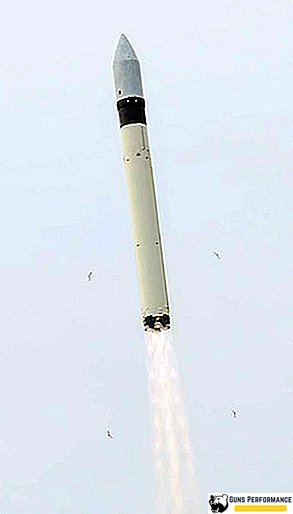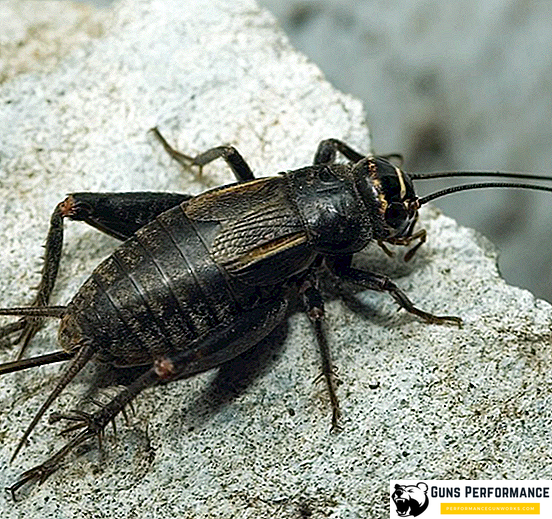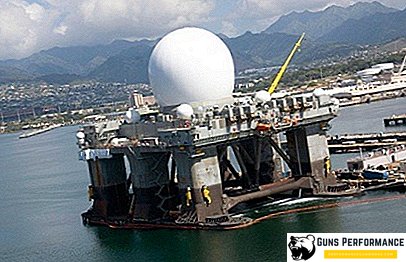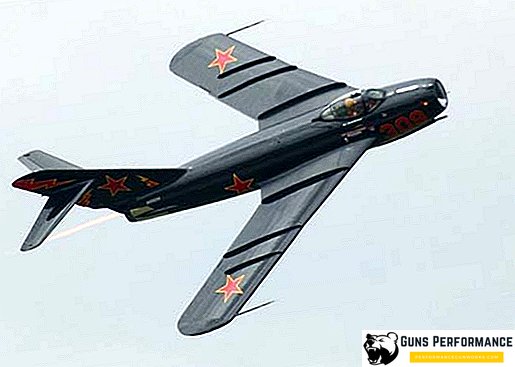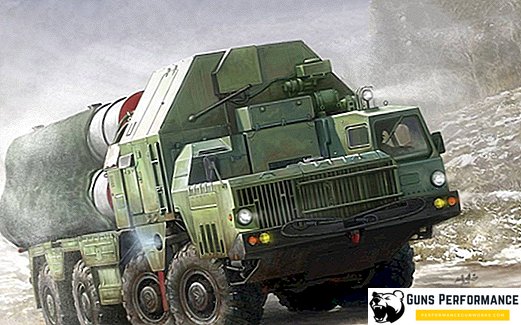
The S-300 is a Soviet (Russian) long-range anti-aircraft missile system designed for the air and missile defense of the most important military and civilian objects: large cities and industrial structures, military bases and command and control areas. The S-300 was developed in the mid-70s by the designers of the famous research and production association Almaz. Currently, the S-300 SAM system is a whole family of anti-aircraft missile systems that reliably protect the Russian sky from any aggressor.
The S-300 missile is capable of hitting an air target at distances of five to two hundred kilometers; it can effectively “work” against both ballistic and aerodynamic targets.
Operation of the S-300 air defense system began in 1975, and this complex was adopted in 1978. Since then, based on the base model, a large number of modifications have been developed, which differ in their characteristics, specialization, radar operation parameters, anti-aircraft missiles and other features.

Anti-aircraft missile systems (ZRS) of the S-300 family is one of the most famous air defense systems in the world. Therefore, it is not surprising that these weapons are in great demand abroad. Today, various modifications of the S-300 air defense system are in service with the former Soviet republics (Ukraine, Belarus, Armenia, Kazakhstan). In addition, the complex is used by the armed forces of Algeria, Bulgaria, Iran, China, Cyprus, Syria, Azerbaijan and other countries.
S-300 never took part in real combat operations, but despite this, the majority of domestic and foreign experts estimate the potential of the complex very highly. So much so that problems with the supply of these weapons sometimes lead to international scandals, as was the case with the Iranian contract.
Further development of the S-300 family of systems is the S-400 complexes (commissioned in 2007) and the promising S-500 Prometheus, which is planned to be commissioned in 2020. In 2011, it was decided to complete the serial production of early modifications of the complex - S-300PS and S-300PM.

For many years, Western experts have dreamed of "getting to know each other" with the S-300 air defense system. Such an opportunity came to them only after the collapse of the USSR. In 1996, the Israelis were able to evaluate the effectiveness of the S-300PMU1 complex, which was previously sold to Cyprus by Russia. After joint exercises with Greece, the representatives of Israel said that they had found the weak points of this anti-aircraft complex.
There is also information (confirmed from various sources) that in the 1990s, the Americans managed to buy elements of their complex in the former Soviet republics.
On March 7, 2018, a number of Western media outlets (in particular, the French Le Figaro) published information about the destruction of the Syrian S-300 battery in the Damascus area by the latest Israeli F-35 aircraft.
The history of the creation of the S-300
The history of creating the S-300 anti-aircraft missile system began in the mid-50s, when the USSR was closely engaged in the creation of an anti-missile defense system. Research work was carried out within the framework of the Shar and Zashchita projects, during which it was experimentally proved that air defense and anti-missile defense systems could be created.
Soviet military strategists clearly understood that the USSR would hardly be able to compete with Western countries in the number of combat aircraft, therefore great attention was paid to the development of air defense forces.

By the end of the 60s, the Soviet military-industrial complex had accumulated considerable experience in the development and operation of anti-aircraft missile systems, including in combat conditions. Vietnam and the Middle East provided Soviet designers with a wealth of factual material for study, showed the strengths and weaknesses of the air defense system.
As a result, it became clear that mobile anti-aircraft missile systems capable of moving as quickly as possible from the marching position to the combat position and back have the greatest chances of hitting the enemy and avoiding retaliation.

At the end of the 60s, with the submission of the command of the USSR Air Defense Forces and the leadership of KB-1 of the Ministry of Radio Industry, the idea arose of creating a unified anti-aircraft anti-aircraft complex that could hit air targets at distances up to 100 km and was suitable for use both in ground forces and in the air defense of the country, and in the Navy. After a discussion in which the military and representatives of the military industrial complex took part, it became clear that such an anti-aircraft system could only justify the cost of manufacturing if it could also perform anti-missile and anti-satellite defense tasks.
The creation of such a complex is an ambitious task in our days. Officially, work on the S-300 began in 1969, after the appearance of the relevant decree of the USSR Council of Ministers.

In the end, it was decided to develop three air defense systems: for the country's air defense, for the air defense of the Ground Forces and for the air defense of the Navy. They received the following designations: S-300P ("Air Defense of the Country"), S-300F ("Naval") and S-300V ("Troop").
Looking ahead, it should be noted that it was not possible to achieve complete unification of all modifications of the S-300 complex. The fact is that the elements of modifications (except for the radar of the circular review and missile defense) were manufactured at various enterprises of the USSR using their own technological requirements, components and technologies.
In general, dozens of enterprises and scientific organizations from all over the Soviet Union were involved in this project. The main developer of the air defense system was NPO Almaz, the S-300 missiles were built at the Fakel ICD.

The further the work progressed, the greater the problems associated with the unification of the anti-aircraft complex. Their main reason was the peculiarities of using such systems in different types of troops. If air defense and naval air defense systems are usually used together with very powerful radar reconnaissance systems, military air defense systems usually have a high degree of autonomy. Therefore, it was decided to transfer work on the S-300V NII-20 (in the future NPO Antey), which by that time had considerable experience in developing army air defense systems.
Specific conditions for the use of anti-aircraft missile systems at sea (reflection from the signal of the surface of the water, high humidity, splashing, rolling) were forced to be appointed as the lead developer of the S-300F VNII RE.
Modification of S-300V
Although the S-300V SAM system was originally created as part of a single program with other modifications of the complex, it was later transferred to another head developer, NII-20 (later NIEMI), and in fact became a separate project. Sverdlovsk machine-building design bureau (SMKB) Novator was engaged in the development of missiles for the S-300V. Launchers and charging machines for the complex were created at the OKB Start, and the Obzor-3 radar was designed at the Scientific Research Institute-208. The C-300B received its own name "Antey-300V" and is still in service with the Russian army.

The following components are part of the anti-aircraft division of the S-300V complex:
- command post (9S457) to control the combat work of the ZRS;
- Radar circular review "Review-3";
- Radar sector review "Ginger";
- Four anti-aircraft batteries for hitting air targets.
Each battery consisted of two types of launchers with different missiles, as well as two start-up machines for each of them.

Initially, the S-300V was planned as a front-line anti-aircraft missile system capable of fighting SRAM, cruise missiles (KR), ballistic missiles (such as Lance or Pershing), enemy aircraft and helicopters, subject to their massive use and active radio-electronic and fire countermeasures.
The creation of the "Atlant-300V" air defense system took place in two stages. At the first of these, the complex “learned” to confidently counteract cruise missiles, ballistic and aerodynamic targets.
1980-1981 On the Emba range, tests of the air defense system were carried out, which were successful. In 1983, the "intermediate" S-300V1 was adopted for service.

The purpose of the second stage of development was to expand the capabilities of the complex, the task was to adapt the air defense missile system to fight Pershing type ballistic missiles, SRAM airball ballistic missiles and jamming aircraft at distances up to 100 km. To this end, the Ginger Radar, the new 9M82 anti-aircraft missiles, launchers and loaders for them were introduced into the complex. Tests of the improved C-300B complex were carried out in 1985-1986. and ended successfully. In 1989, the S-300V was adopted.
Currently, the S-300V air defense system is in service with the Russian army (more than 200 units), as well as the armed forces of Ukraine, Belarus and Venezuela.
On the basis of the S-300V ZRS, the S-300VM (Antey-2500) and S-300V4 versions have been developed.
S-300VM is an export modification of the complex, which was supplied to Venezuela. The system has one type of missiles in two versions, its firing range reaches 200 km, the S-300VM can simultaneously hit 16 ballistic or 24 aerial targets. The maximum height of the lesion is 30 km, the deployment time is six minutes. The speed zour is 7.85 mach.

C-300B4. The most modern modification of the complex, it can hit ballistic missiles and aerodynamic targets at distances of 400 km. At present, all S-300V complexes that are in service with the Russian Armed Forces have been upgraded to S-300V4.
Modification of S-300P
ZRS S-300P is an anti-aircraft system designed to defend the most important civilian and military targets from any type of air attack: ballistic and cruise missiles, airplanes, unmanned aerial vehicles, under conditions of massive use with active enemy radio electronic countermeasures.
Serial production of the S-300PT anti-aircraft missile system began in 1975, three years later it was put into service and began to enter combat units. The letter "T" in the name of the complex means "transportable". The lead developer of the complex was NPO Almaz, a rocket was constructed at the Fakel Design Bureau, and it was manufactured at the Severny Zavod in Leningrad. Launchers engaged in Leningrad KBSM.

This air defense system was supposed to replace the outdated at that time, C-25 and S-75 and C-125 SAM systems.
The S-300PT air defense system consisted of a command post, which included a 5H64 detection radar and a 5K56 command post, and six 5Z15 SAM systems. Initially, the system used V-500K missiles with a maximum range of 47 km, later they were replaced with B-500R missiles with a target range of up to 75 km and an on-board radio direction finder.
The 5Zh15 air defense missile system included a radar for detecting targets at low and extremely low altitudes 5Н66, a control system with a radar for pointing illumination 5H63 and PU 5П85-1. The air defense system could well function without the 5N66 radar. Launchers were located on semi-trailers.
On the basis of the S-300PT anti-aircraft missile system, several modifications were developed that were operated in the USSR and shipped for export. ZRS S-300PT discontinued.
One of the most massive modifications of the anti-aircraft complex was the S-300PS ("C" means "self-propelled"), which was put into service in 1982. By its creation, Soviet designers inspired the use of air defense systems in the Middle East and Vietnam. He clearly showed that only highly mobile air defense systems with minimal deployment time can survive and effectively perform combat work. The S-300PS was deployed from a traveling position to a combat position (and back) in just five minutes.

The structure of ZRS S-300PS includes KP 5N83S and up to 6 ZRK 5Zh15S. In addition, each individual complex has a high degree of autonomy and can fight independently.
The CP includes a radar detection 5H64S, made on the chassis of the MAZ-7410 and 5K56S control center based on the MAZ-543. ZRK 5Zh15S consists of radar illumination and guidance 5H63S and several launch complexes (up to four). On each PU there are four missiles. They are also made on the chassis of the MAZ-543. In addition, the complex may include a system for detecting and destroying low-altitude targets 5Н66М. The complex is equipped with an autonomous power supply system.
In addition, each S-300PS division could be equipped with an all-high-speed three-coordinate radar 36D6 or 16ZH6 and a 1T12-2M toporavvyazchik. In addition, the anti-aircraft missile system could be equipped with a duty support module (based on MAZ-543), in which a canteen, a guard room with a machine gun, and living rooms were equipped.

In the mid-80s, a modification of the S-300PMU was developed on the S-300PS base, the main difference of which was an increase in the ammunition load to 28 Zour. In 1989, an export modification of the S-300PMU complex appeared.
In the mid-1980s, the development of another S-300PS modification, S-300PM, began. Externally (and in composition), this system did not differ much from the previous complexes of this series, but this modification was performed on a new elementary base, which made it possible to bring its characteristics to a new level: to significantly increase the noise immunity and to almost double the range of target destruction. In 1989, the S-300PM was adopted by the USSR Air Defense Forces. At its base, an improved modification of the S-300PMU1 was created, which was first demonstrated to the general public in 1993 at the Zhukovsky Air Show.
The main difference with the S-300PMU1 was the new ZUR 48N6, which had a smaller warhead and a more advanced hardware component. Thanks to this, the new air defense system was able to fight air targets flying at a speed of 6,450 km / h and confidently hit enemy planes at distances of 150 km. The S-300PMU1 includes more advanced radar stations.
ZRS S-300PMU1 can be used both independently and in combination with other air defense systems. The minimum ESR of the target, sufficient for detection, is 0.2 square meters. meters.

In 1999, new anti-aircraft missiles were demonstrated for the S-300PMU1 complex. They had a smaller warhead, but greater accuracy of hitting the target due to the new maneuvering system, which did not work at the expense of tail, but using a gas-dynamic system.
Until 2014, all ZRS-300PM, which are in service with the Russian Armed Forces, were upgraded to the S-300PMU1 level.
Currently, the second stage of modernization is underway, which consists in replacing the outdated computing facilities of the complex with modern models, as well as in replacing the equipment of anti-aircraft workstations. New complexes will be equipped with modern means of communication, topographic location and navigation.

In 1997, the public was presented a new modification of the complex - S-300PM2 "Favorite". Then it was adopted. This option has an increased range of targets (up to 195 km), as well as the ability to withstand the latest aircraft manufactured using stealth technology (the target EPR is 0.02 sq. M.).
"Favorite" received advanced missiles 48N6E2, capable of destroying ballistic targets of short and medium range. The S-300PM2 troops began to appear in 2013, the previously released modifications of the S-300PM and S-300PMU1 can be upgraded to their level.
Modification of the S-300F
The S-300F is an anti-aircraft missile system developed for the Navy based on the S-300P air defense system. The lead developer of the complex was VNII RE SME (later NPO "Altair"), the missile was the ICB Fakel, and the radar was NIIP. Initially, the new air defense system planned to arm missile cruisers of projects 1164 and 1144, as well as ships of project 1165, which was never implemented.

ZRS S-300F was designed to hit air targets at distances up to 75 km, flying at a speed of 1300 m / s in the altitude range from 25 m to 25 km.
The prototype of the S-300F was first installed on the BOD "Azov" in 1977, officially adopted into service with the complex in 1984. State tests of the naval version of the S-300 were held on the Kirov missile cruiser (project 1144).
The prototype SAM consisted of two drum-type launchers that could hold 48 missiles, as well as the Fort control system.
LAW S-300F "Fort" was produced in two versions with six and eight drums, each of which contained 8 vertical launch canisters. One of them was always under the launch hatch, the rocket's main engine was launched after it left the guides. After the launch of the rocket, the drum turned and took out a new container with the missile defense system under the hatch. Firing interval S-300F - 3 seconds.

The S-300F missiles have a homing system with a semi-active rocket radar. The complex has MSR 3P41 with a radar with a phased antenna array.
The 5V55RM SAM, which was used on the S-300 Fort complex, is a solid-fuel rocket made according to the normal aerodynamic configuration. The deviation of the rocket in flight was due to the gas-dynamic system. Fuse - radar, high-explosive fragmentation warhead, weighing 130 kg.
In 1990, a modified version of the complex, the S-300FM Fort-M, was demonstrated. Its main difference from the base model was the new SAM 48N6. Масса ее боевой части была увеличена до 150 кг, а радиус поражения - до 150 км. Новая ракета могла уничтожать объекты, летящие со скоростью до 1800 м/с. Экспортная модификация С-300ФМ имеет наименование "Риф-М", в настоящее время ею вооружены эсминцы ВМФ Китая типа 051С.
Последней модернизацией комплекса С-300Ф "Форт" является разработка зенитных управляемых ракет 48Н6Е2, которые имеют дальность стрельбы 200 км. В настоящее время подобными ЗУР вооружен флагман Северного флота крейсер "Петр Великий".




